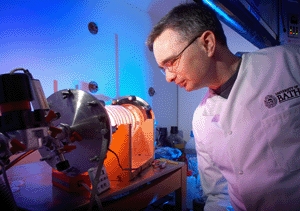The €4.5m (£3.7m) European Commission-funded Bacteriosafe project is bringing together Bath University academics and the burns team at the Southwest UK Paediatric Burns Centre at Frenchay Hospital, Bristol, who will work with teams across Europe and Australia to create the advanced wound dressing.
The dressing will work by releasing antibiotics from nanocapsules triggered by the presence of disease-causing pathogenic bacteria, which will target treatment before the infection takes hold.
The dressing will also change colour when the antibiotic is released, alerting healthcare professionals that there is infection in the wound – a situation that can lead to toxic shock syndrome.
Dr Toby Jenkins, project leader from Bath University, told The Engineer that the dressing’s nanocapsules are made primarily of lipids – the same molecules that, in part, make up cell membranes.
‘The capsules are made by extruding a suspension of the lipids and fatty acids through a nanoporous membrane and irradiating with UV [ultraviolet] light,’ he said.
Jenkins added that photo-polymerisable fatty acids will help to strengthen the capsule and that early experiments suggest nanocapsules are stable enough to release the antibiotic on contact with pathogenic bacteria.

The Bacteriosafe project is a collaboration of 11 partners across Europe and Australia co-ordinated by Dr Renate Förch at the Max-Planck-Institute for Polymer Research, which will develop the prototype dressing over four years. Under the terms of the grant agreement, Bath with own all intellectual property that it develops during the project.
Manufacturers involved in engineering the production method for the new dressing include Hartmann, a German multinational wound-care company; Freudenberg, a multinational producer of non-woven medical textiles; and Centexabel, a Belgian textile research company.
It is believed that the specialist dressing could be available to hospitals within a few years after the completion of the project, but it is not likely to be sold in high-street stores.





Project to investigate hybrid approach to titanium manufacturing
What is this a hybrid of? Superplastic forming tends to be performed slowly as otherwise the behaviour is the hot creep that typifies hot...